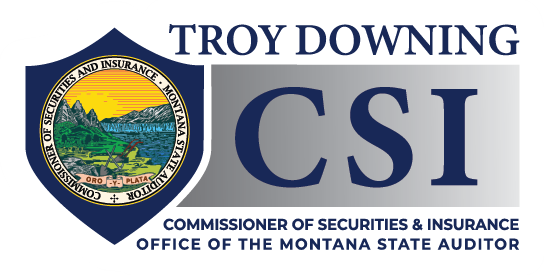Click HERE to read the full article.
In the counties most devastated by this week’s historic flooding in and around Yellowstone National Park, only 3% of residents have federal flood insurance, virtually guaranteeing huge losses and long waits for repair money.
Why it matters: Most Americans don’t buy flood insurance, even as climate change makes epic catastrophes like the Yellowstone disaster more likely.
- Such insurance could become harder to get: The Biden administration wants to dramatically scale back the National Flood Insurance Program by excluding new homes in flood-prone areas.
Driving the news: The unprecedented rainfall, snow melt and mudslides that have forced closures at Yellowstone have also caused widespread destruction to homes and bridges in at least three Montana counties, where residents await a federal disaster declaration that would trigger Federal Emergency Management Agency (FEMA) assistance.
- A “painfully low” number of homeowners in the area have flood insurance, Troy Downing, Montana’s insurance commissioner, told Axios Thursday as he rode to the town of Red Lodge to observe damage there.
- “People get a little bit complacent about their policies,” Downing said. “They’ll say, ‘You know, I haven’t had an issue in years. Why am I still paying for this?’”
Homeowners insurance doesn’t typically cover flood damage, notes FEMA, which runs the National Flood Insurance Program. “Just one inch of floodwater can cause up to $25,000 in damage,” the agency says.
- Without flood insurance, property owners seeking repair money must resort to FEMA grants (which tend to be small and hard to get) or a disaster loan from the Small Business Administration (which must be repaid).
- “Everybody’s going to have to turn to FEMA to help, and they’re going to be shocked when they see how little help they actually end up getting,” Loretta Worters, vice president at the Insurance Information Institute (III), tells Axios.
By the numbers: Only 2% of Montanans have federal flood insurance, according to the III, compared with 27% of Americans overall who say they have it (though FEMA estimates the number is actually lower).
- The worst of this week’s damage is in three counties — Park, Carbon, and Stillwater — where federal flood insurance uptake was 3% in 2020, the most recent year data is available, according to the III’s Resilience Accelerator.
- The area includes posh Paradise Valley, where the Yellowstone River is dotted with multimillion-dollar homes, some owned by celebrities who enjoy fly-fishing.
This isn’t just a Montana problem. About 40 million U.S. properties are at risk of flooding, but only 5 million Americans have federal flood insurance, says Donald Griffin, vice president at the American Property Casualty Insurance Association.
What they’re saying: “We’re in 100% crisis mode,” says Pat Ruzich, an executive coach who lives in a “100-year-old house with a lot of character” in Red Lodge, Montana. Her basement completely filled with water on Sunday, and her first floor got several inches.
- Ruzich doesn’t have flood insurance and says she only knows one person who does.
- “When I bought the place and I talked to people — no one’s ever had this kind of problem,” she said. “So I did my homework, and the answer was ‘no’” to insurance.
- “We’re in a 100-year flood plain,” she said. “They say this is a 500-year event. Who would have thought?”
What’s next: Congress must reauthorize the National Flood Insurance Program by the end of September, and changes may be in store.
- The Biden administration has quietly proposed “a massive overhaul” of the program, per E&E news.
- The plan would deny new policies for any commercial buildings and for new homes in flood-prone areas, and drop coverage for people who have already reaped multiple claim payments.
- Congress will have a thing or two to say about these proposals, Griffin notes: “While flooding is kind of a bipartisan issue, strangely enough, there’s still no agreement on how to reform it or what to do with it.”
The bottom line: As climate change runs its course, places with scant history of major flooding will be vulnerable — and every homeowner should consider flood insurance.
- “What FEMA has started saying is, ‘Where it rains, it can flood,’” Griffin said.
- Downing, the Montana insurance commissioner, is exhorting everyone in the state to get covered: “We have no idea what July is going to bring.”
Of note: Montana residents with questions about flood insurance can call (406) 444-2040 for information and help.
Was this helpful?
Please give us your feedback!
Please let us know how we could improve this article.
